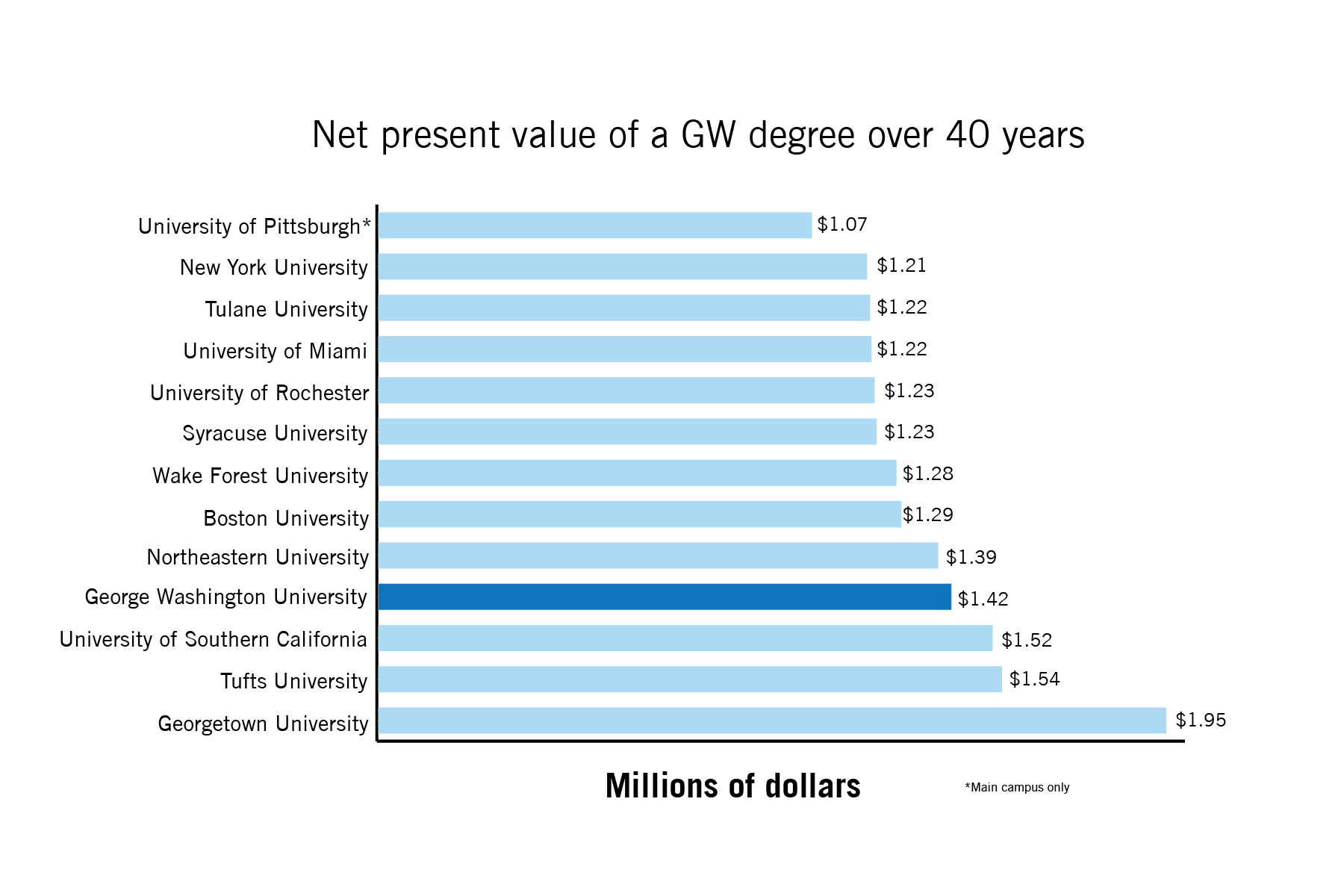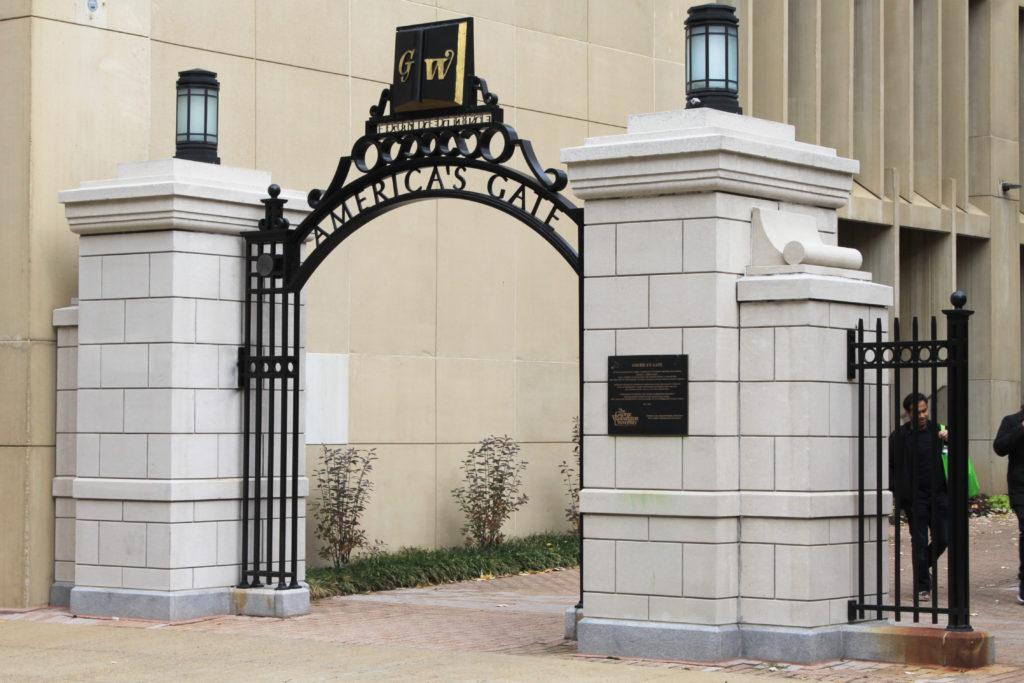GW graduates can expect to make about an additional $1.4 million over 40 years after receiving their degree, according to a new report.
The report – developed by Georgetown University’s Center on Education and the Workforce – ranked the value of colleges’ degrees to measure the “worth” of a college credential and placed GW degrees at No. 71 out of 4,500 colleges and universities over a 40-year span. Higher education experts said strong internship programs and effective career placement can improve the value of a university’s degree.
The researchers who developed the report used net present value – which discounts income earned in the future by the rate of interest to determine its value in the present – to determine the value of the degrees. The report finds that over 40 years, GW outpaced nine of its 12 peer institutions, falling below Georgetown and Tufts universities and the University of Southern California.
University spokeswoman Crystal Nosal did not return a request for comment.

Jack Liu | Web Developer
Over a 10-year horizon, a degree from GW ranks No. 2,018 overall with a net present value of $114,000, according to the report. The report states that over the short term, community colleges and other two-year institutions tend to have higher rankings because degrees from those institutions “generate strong earnings quickly after students finish their credentials.”
Robert Kelchen, an associate professor of higher education in the Department of Education Leadership, Management and Policy at Seton Hall University, said a high degree value demonstrates that graduates can anticipate large expected income gains that far exceed the costs of obtaining their degree.
“College prices vary somewhat, but the biggest influence of return on investment is a high salary after college,” he said in an email.
He added that institutions can raise their degrees’ net present values by cutting the cost of attendance and investing greater amounts of resources on career services efforts. More than 80 percent of students at GW have activated their profiles on Handshake, the University’s job-finding platform, higher than the activation rate at similarly-ranked schools also using the platform.
“Colleges could reduce the price of attending college by reducing tuition or increasing financial aid,” he said. “But the larger effect would likely be to improve the quality of education, internship and career services to help more students graduate and get good jobs after graduation.”
Douglas Webber, the director of graduate studies at Temple University’s Department of Economics and the co-editor of Economics of Education Review, said universities with highly valued degrees often are successful at helping students land a high-paying job upon graduation.
The starting salary for GW graduates hit $56,500 this year, an annual increase of about 4.3 percent and slightly above the national average for college graduates.
Webber added that having solid foundational work experience through an internship is crucial to prepare for those good jobs, he said.
“I think internships are the best way out of college to get not just a job, but to get a good job,” he said. “The colleges could do a better job of building these kinds of infrastructure for internships, as you know that that could absolutely raise the net present value of a degree.”
GW placed 16th in U.S. News and World Report’s most recent ranking for the best college internship programs. Sixty-eight percent of GW students who graduated between 2015 and 2017 interned during their time at the University, according to GW’s career services website.
Webber said schools that focus on specialized academic fields – like the Massachusetts Institute of Technology, the Albany College of Pharmacy or the Maine Maritime Academy – often rank high in lists of degrees by value because the specialized degree students obtain from these schools is needed in the job market.
“They are specializing in the fields that are very, very lucrative,” he said. “But those are also highly selective schools that give you arguably the world’s best education.”
Kaitlin Mulhere, a reporter and a special projects editor at Money magazine, said all colleges publish cost of attendance figures, but it is more difficult for applicants and students to find and comprehend the return on investment they will obtain from paying for and completing their degrees.
“How much do you pay is the easy part of that equation to calculate,” she said. “What you get out of it is the more challenging aspect.”
Mulhere said the report is an especially helpful tool for high school students who are applying to college, because it can help them understand the return on investment of attending a specific school.
“So the report helps, because it tells essentially what a college degree should give you and if it’s a valuable degree with many years of higher earnings,” she said.





